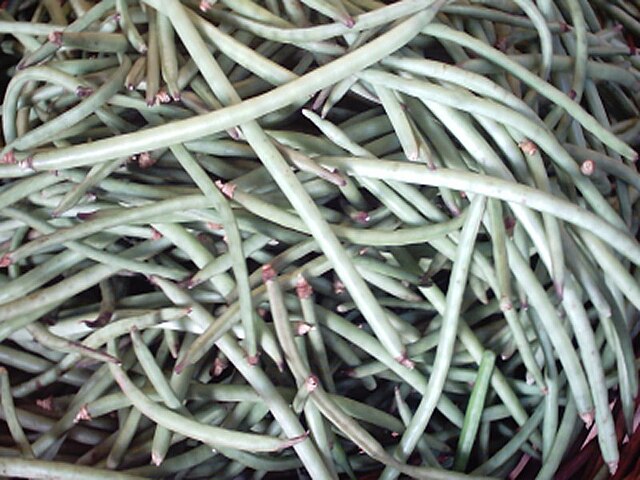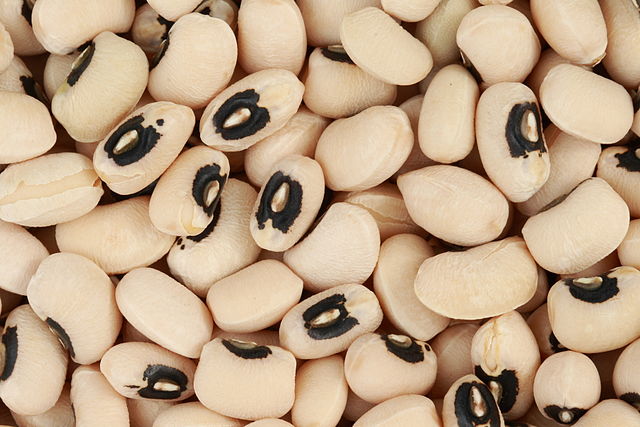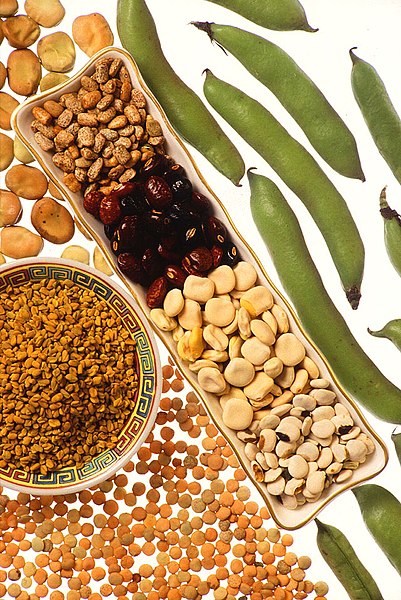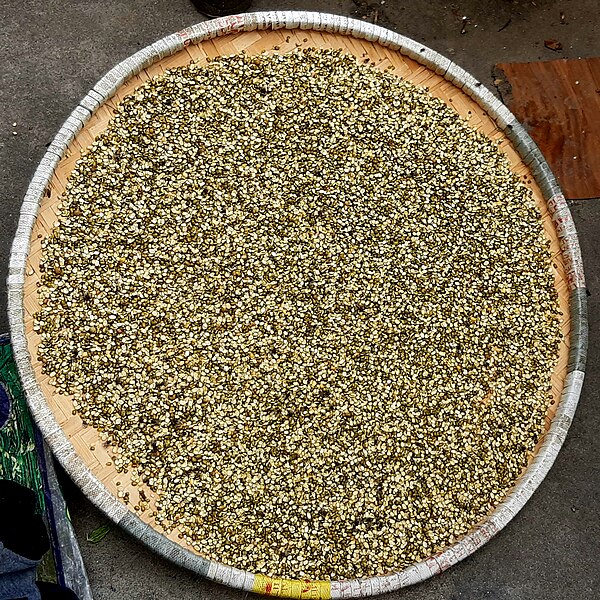The cowpea is an annual herbaceous legume from the genus Vigna. Its tolerance for sandy soil and low rainfall have made it an important crop in the semiarid regions across Africa and Asia. It requires very few inputs, as the plant's root nodules are able to fix atmospheric nitrogen, making it a valuable crop for resource-poor farmers and well-suited to intercropping with other crops. The whole plant is used as forage for animals, with its use as cattle feed likely responsible for its name.
Cowpea
Black-eyed peas, a common name for a cowpea cultivar, are named due to the presence of a distinctive black spot on their hilum.
Sea Island red pea a cultivar of cowpea grown by the Gullah people on the Sea islands.
A selection of different cowpea cultivars displayed in a wooden bowl.
Legumes are plants in the family Fabaceae, or the fruit or seeds of such plants. When used as a dry grain for human consumption, the seeds are also called pulses. Legumes are grown agriculturally, primarily for human consumption; for livestock forage and silage; and as soil-enhancing green manure. Well-known legumes include beans, soybeans, chickpeas, peanuts, lentils, lupins, grass peas, mesquite, carob, tamarind, alfalfa, and clover. Legumes produce a botanically unique type of fruit – a simple dry fruit that develops from a simple carpel and usually dehisces on two sides.
A selection of dried pulses and fresh legumes
Pulses for sale in a Darjeeling market
Pulses in a Nanglo tray
Freshly dug peanuts (Arachis hypogaea), indehiscent legume fruits








